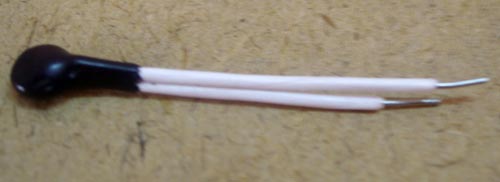+91-9447120303
jayankolazhy@gmail.com
Thermistor Sensors Vs Other Sensors In Electronics Market
Posted by Admin on January, 13, 2022

As the name suggests, the thermistor is the thermal resistor. The thermistor is the resistor that depends on the changing temperature. It is made of metallic oxide that is next moulded into a disk, bead, or other shapes. Finally, it has glass or enclosed enclosing as well.
The thermistors perform well in normal temperature conditions rather than extreme temperatures. The working temperature is limited up to 50 degrees and this range is reliable on its base resistance.
Thermistors are relatively cheaper, easily usable, and durable. Commonly you should use it in digital thermometers, household appliances, and vehicles. You cannot imagine refrigerators and ovens without heating/cooling protective circuits for healthy & safe operation.
Next, it also has built-in complicated applications like optical blocks, laser stabilisation circuits, charge-coupled devices, and many more. The standard 10-kilo ohm thermistor sensor is easily framed of laser packages.
Working Principle of Thermistor:
As per the temperature coefficients, we classify it into two types out of which negative temperature coefficient has significant use. In NTC, the resistance value decreases as per the gradual increase in temperature. We see the vice versa for PTC.
The material type in the thermistor sensor decides the change of resistance with the temperature change. As we can guess, it is a non-linear device as there is no linear relationship between the temperature and resistance. We can only measure the deflection of resistances with temperatures in its graph.
Resistance Changes Converted into Measurable Data:
The resistance change is converted into the heat to produce the measure data in the thermistor sensor.
If you compare thermistors to other sensors, we may have some idea as per the consultation with
Thermistor Sensor Supplier :
Other sensors use integrated circuits and Resistance Temperature Detector. Each has its benefits as well as shortcomings that we skip sometimes.
Thermistor Advantages:
• Sensitivity
• Durability
• Relatively cost-effective
• The best measurement for single-point temperature
• Size is small
Thermistor Disadvantages:
• We realise the curved output instead of the linear relationship between the temperature and related resistance.
• It limits the temperature ranges by which we cannot produce the data for extended temperature ranges.
RTD Advantages:
• Unlike thermistors, it provides linear output.
• Output is accurate to the linear line.
• You can easily measure the bulk data for a wide range of temperatures.
RTD Disadvantages:
• It is more costly and cannot beat Thermistor Sensor Supplier in terms of cost-effectiveness and reliability for huge applications.
• Its response is also very slow.
Thermistor Sensor Types:
Be it chip or rod-shapes, we can see surface embedding or mounting among different varieties.
The shape is considered by choosing the perfect material type in extreme conditions. These may be enclosed in glass/resin, phenolic, or baked or painted as per the ask of applications.
The chips can be mounted on the circuits whereas the beads are embedded or fitted into the device. In every application, we expect the maximum surface attachment with prioritised thermal conduction and monitoring.
Get the latest models and features of its operational control from a Thermistor Sensor Supplier in India.
Search
Category
Recent Posts
- Get the best quality of the thermistor sensor from the supplier
- Everything You Need To Know About AC Sensors & Their Functions
- NTC Thermistor Products: Features, Applications and Purchase
- Measuring Temperature with Precision: The Importance of Surface Temperature Sensors
- A Complete Guide About Screw Type NTC Surface Temperature Sensor


Leave a Comment